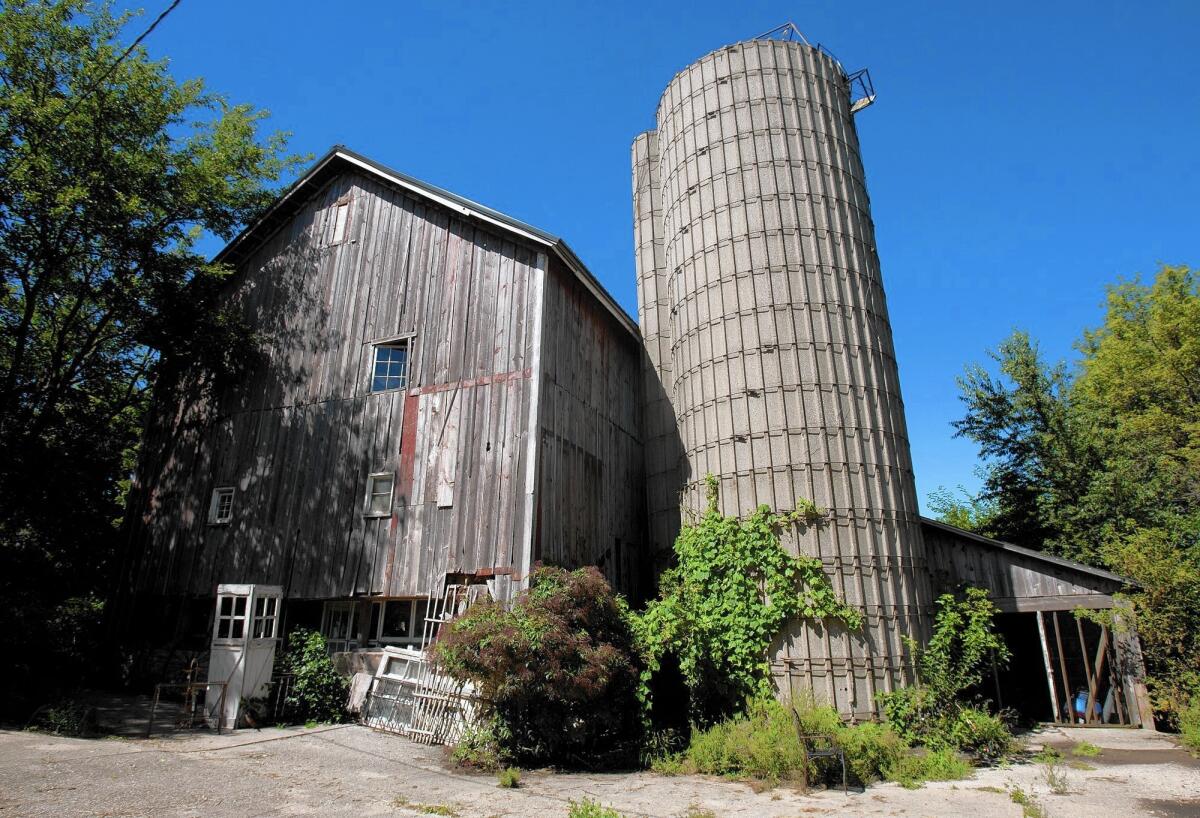With barns disappearing in Midwest, a preservation movement rises

- Share via
Reporting from Chenoa, Ill. — For years Pat Huth came home from vacation with photos she’d taken of barns she admired on her journeys, but she never thought to take any of the ones around her home in central Illinois.
“I never realized how pretty the barns are right here around us,” Huth said as she drove up a lane toward a 1920s barn.
Huth realized something else about barns in her home state.
“They are a dying breed,” she said.
That’s why Huth has joined others in Illinois to promote the restoration and preservation of these onetime hubs of farm activity.
Barn preservationists say the iconic symbol of agriculture in the heartland is disappearing at an astounding rate. They estimate that as few as 10% of the barns Illinois had in the 1920s are standing.
The once-essential buildings are crumbling to the pressures of time, weather, modern farming and the expense of keeping them up. Although small, grass-roots organizations are trying to make a difference, they say they need more support within the state to help keep these barns around. They point to Iowa, where grants and state tax credits help the preservation movement.
Since 1997 the volunteer-run Iowa Barn Foundation has given 119 matching grants totaling more than $1 million to Iowans rehabbing barns. Funding comes from donations by individuals, corporations and other foundations.
Barns in Iowa built before 1937 and those listed in or considered for the National Register of Historic Places are eligible for a state tax credit. And barns built before 1937 are eligible for a property tax exemption when they are restored, the foundation said.
But farmers these days struggle with putting the structures to good use. Modern equipment often doesn’t fit in the old barns, and fewer farmers have livestock and feed requiring a barn’s shelter.
Ron Ropp lives in a barn built by his great-grandfather in 1874 near Normal, Ill. Ropp, who started the McLean County Barn Keepers, marvels at barns and those who built them without architectural plans or modern equipment.
“It is incredible to see the size and the architecture, and to think how in the world did they put these things together with just teams of horses and willing neighbors and friends,” he said.
Barn Keepers promotes the restoration, preservation and repurposing of barns. After comparing aerial photos taken in McLean County in 1955 to ones shot in 2000, Ropp found that barns dropped in number from 4,859 to 1,229. “And I think we’ve lost 100 to 150 since then,” he said.
It’s not just the buildings but the stories behind them that need to be preserved, Ropp said.
“My great-great-grandfather broke the prairie near my house with a team of oxen,” he said. “Those are the stories of farms.”
Ropp concedes that it is “very expensive to take care of an old barn.”
His son, Jon Ropp, who repairs and converts barns, said the cost starts at $30,000 to $40,000 to put a roof and siding on a conventional barn unless you are doing the labor.
Josie and Paul Hopkins of Maple Park are familiar with the preservation process. Home of Josie’s Antiques, the 1839 wood-peg barn is an example of repurposing historic structures, but the Hopkinses say it didn’t happen easily or overnight.
“It’s been endless work, physical pain and expense, but we love it,” Josie Hopkins said, adding that “it would be disastrous to not save it.”
Environmental and historical consultant Nancy Schumm of Lake Barrington became passionate about saving barns while photographing them in Lake County.
Schumm says there were 237,601 farms in Illinois in 1925, and she assumes each had at least one barn. In 2007, just 25,767 farmers in Illinois replied to a state census question indicating they had a barn built prior to 1960.
“Considering that they were once the most important architectural structure in the Midwest, this is disturbing,” Schumm said.
More to Read
Sign up for Essential California
The most important California stories and recommendations in your inbox every morning.
You may occasionally receive promotional content from the Los Angeles Times.










